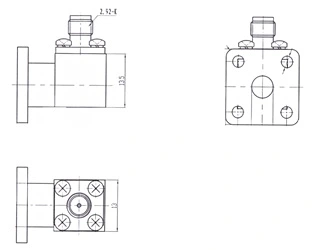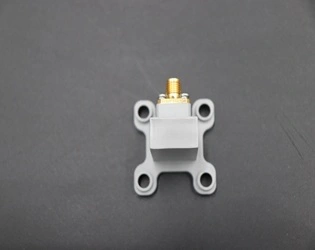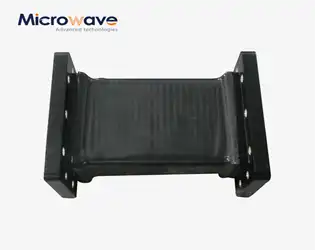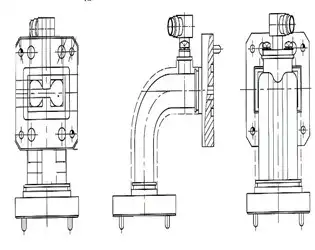BLOG
.webp)
What are the key features and benefits of an End Launch Waveguide to Coaxial Adapter?
April 25, 2025
The End Launch Waveguide to Coaxial Adapter represents a critical component in modern microwave systems, serving as the bridge between waveguide and coaxial transmission lines. These specialized adapters facilitate seamless signal conversion while minimizing losses and maintaining signal integrity across the transition point. Engineered with precision, End Launch Waveguide to Coaxial Adapters offer exceptional electrical performance across broad frequency ranges, accommodating applications up to 110 GHz. Their robust construction, versatile connectivity options, and ability to maintain low insertion loss and VSWR (Voltage Standing Wave Ratio) make them indispensable in high-frequency communication systems, particularly in satellite communications, aerospace, defense, and telecommunications infrastructure..webp)
How do engineers determine the technical specifications when customizing a WG to Coaxial Adapter?
April 25, 2025
When engineers approach the customization of waveguide-to-coaxial adapters, they must carefully analyze system requirements and operational parameters to ensure optimal signal transmission. The process of determining technical specifications for a Custom WG to Coaxial Adapter involves evaluating frequency ranges, power handling capabilities, impedance matching requirements, and environmental conditions. Engineers must balance theoretical performance with practical manufacturing constraints, while considering the specific application needs. This critical component serves as the interface between two fundamentally different transmission line technologies, requiring precise engineering to minimize signal loss and distortion..webp)
What are the different types of WG Adapters and their unique functions?
April 25, 2025
Waveguide (WG) adapters are essential components in microwave and RF applications, serving as critical interfaces between different transmission line technologies. These specialized devices enable seamless transition between waveguide structures and other transmission media such as coaxial lines or microstrip configurations. With numerous types available for various applications, WG adapters address specific operational requirements across different frequency bands, power levels, and installation scenarios, offering engineers flexible solutions for complex RF system designs.
Can a Circular Waveguide To Coaxial Adapter be used in high-power applications?
April 25, 2025
When engineering microwave systems that demand substantial power handling capabilities, the question of whether circular waveguide to coaxial adapters can withstand high-power applications becomes critically important. The answer is a resounding yes—Circular Waveguide To Coaxial Adapters are specifically engineered to excel in high-power scenarios, offering exceptional performance characteristics that make them ideal for demanding applications. These precision-engineered components provide the crucial interface between circular waveguide systems and coaxial transmission lines, maintaining signal integrity while efficiently managing high power levels. With proper design considerations and material selection, these adapters can handle power requirements ranging from moderate to extremely high levels, making them indispensable components in modern high-frequency communication systems, radar installations, and satellite communications infrastructure.
What are the primary design features of a Right Angle Waveguide To Coaxial Adapter?
April 25, 2025
Right Angle Waveguide To Coaxial Adapters are sophisticated components designed to bridge waveguide and coaxial transmission lines at a 90-degree angle. These specialized adapters feature precision-engineered interfaces that maintain signal integrity across the transition while accommodating space constraints in complex systems. The primary design features include impedance matching structures to minimize reflection, carefully calculated dimensions to maintain mode conversion efficiency, robust mechanical construction for environmental stability, and optimized internal geometry to reduce insertion loss—all critical elements that ensure seamless RF/microwave signal propagation in applications demanding both high performance and compact installation footprints..webp)
How to Test the Performance of High-Power Waveguide to Coaxial Adapters?
April 24, 2025
Testing the performance of High Power Waveguide to Coaxial Adapters is critical for ensuring optimal signal transmission in high-frequency applications. These specialized components serve as essential interfaces between waveguide systems and coaxial cables, requiring thorough evaluation to verify their capability to handle substantial power loads while maintaining signal integrity. Advanced testing methodologies include network analyzer measurements, power handling assessments, and environmental stress testing to validate insertion loss, VSWR, return loss, and power capacity. By implementing comprehensive testing protocols, engineers can ensure that High Power Waveguide to Coaxial Adapters meet the rigorous demands of satellite communications, defense systems, and telecommunications infrastructure where performance reliability is non-negotiable.
Can flexible seamless waveguides replace traditional rigid waveguides in all applications?
April 24, 2025
The question of whether flexible seamless waveguides can fully replace their rigid counterparts is one that resonates throughout the microwave engineering community. As transmission systems become more complex and space constraints more challenging, engineers are increasingly turning to flexible solutions. Flexible Seamless Waveguides offer remarkable advantages in many scenarios, providing the adaptability needed for complex installations while maintaining excellent signal integrity. However, the complete replacement of traditional rigid waveguides across all applications requires careful consideration of specific performance requirements, environmental conditions, and technical specifications. This exploration delves into the capabilities, limitations, and ideal use cases for flexible seamless waveguide technology in today's demanding communication and defense systems.
What are the Key Advantages of Flexible Twistable Waveguides?
April 24, 2025
In the world of high-frequency microwave transmission, the choice of waveguide technology can significantly impact system performance and reliability. Flexible Twistable Waveguides represent a critical innovation in microwave engineering, offering remarkable adaptability where traditional rigid waveguides fail to deliver. These precision-engineered components allow for both bending and twisting movements while maintaining optimal signal integrity—a crucial capability for complex system installations. Advanced Microwave Technologies Co., Ltd, with over two decades of experience in microwave products, has perfected these versatile transmission solutions to meet the demanding requirements of industries ranging from satellite communications to aerospace and defense applications.




